The most common cause is genetic predisposition, which is favored by hormonal influences. Other triggers of hair loss can be an unbalanced diet, stress, or medical treatment.
Hair loss often harms the self-esteem of those affected. Hair transplantation offers a truly promising and permanent solution against hair loss.
Hair from the donor area (back of the head) is transplanted to the bald areas (recipient area). The transplanted hair usually lasts a lifetime as it comes from a genetically resistant area (donor area).
IST-HAAR accompanies you on your way to a full head of hair with a customized travel plan for your hair transplant in Istanbul.
IST-HAAR organizes your treatment with Clinicana at the renowned Acibadem Hospital, one of the leading international clinics for hair transplants.

Your satisfaction is our top priority.
Trust IST-HAAR – your expert for a hair transplant in Istanbul.
Your satisfaction is our top priority.
Trust IST HAAR – your expert for a hair transplant in Istanbul.
Over time, two methods of hair transplantation have proven to be particularly efficient and gentle.
Hair is always extracted using the FUE-method (Follicular Unit Extraction).
This is an advanced form of the outdated FUT-method (Follicular Unit Transplantation). With the FUE-method, the hair follicles are extracted individually.
This method leaves no scars and ensures a natural result.
The hair follicles are transplanted using either the Sapphire-method or the DHI-method.
Both methods have a success rate of over 95%.
Depending on which method makes more sense for you, Clinicana will use it.
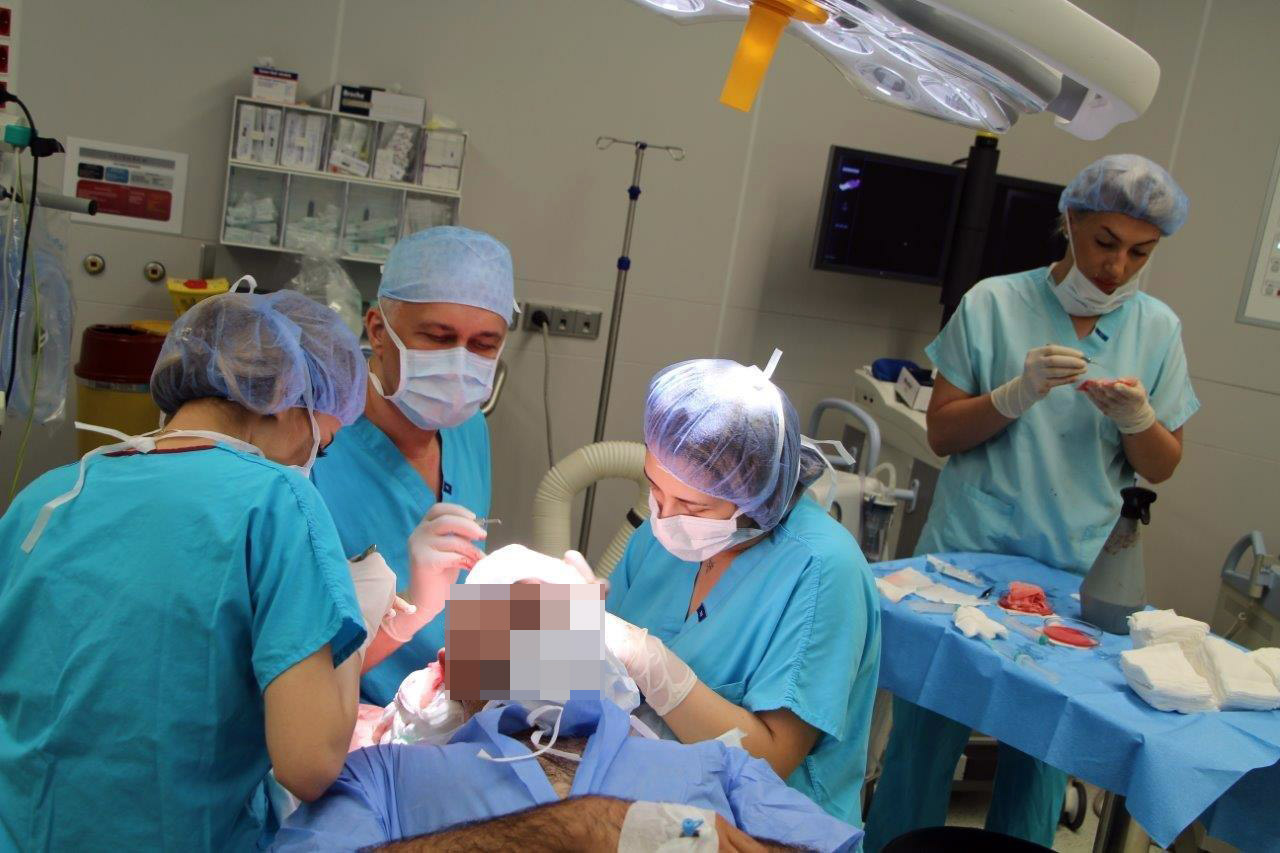
The Sapphire-method is an innovative and extremely promising hair transplant technique.
Individual hair follicles are harvested from the donor area (usually the back of the head) using the FUE-method.
The individual channels are then opened in the recipient area and the previously extracted hair follicles are implanted.
This method is particularly suitable for larger transplantation areas.
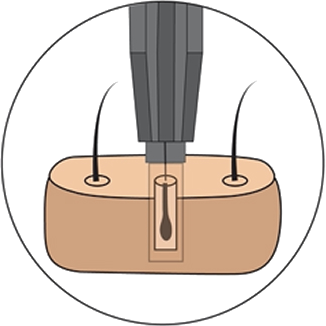
In the first step, the donor area is shaved and then locally anaesthetized. Our specialists then use a tiny “micro-punch” to carefully remove individual grafts (groups of 1 to 4 hairs) from the donor area using FUE.
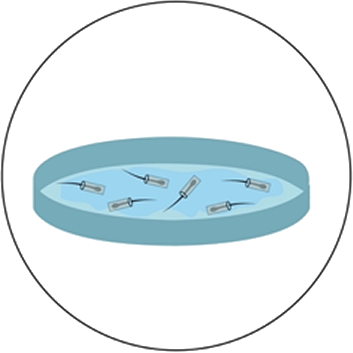
The harvested hair follicles are placed in a special nutrient solution so they remain healthy and vital until they are transplanted into the recipient area.

Fine channels are opened in the recipient area using a sapphire blade, into which the hair follicles are then inserted.
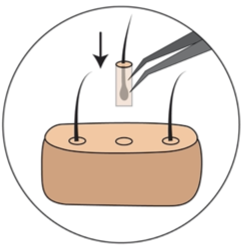
The prepared hair follicles are now carefully implanted into the previously opened channels. The channels close automatically within a few hours, and the healing process starts.
The DHI-method is similar to the Sapphire-method, in particular, the hair follicle extraction technique is identical (FUE).
The main difference is that no channels need to be opened in advance.
By eliminating the separate channel opening, less stress is placed on the scalp, which can speed up healing.
The so-called “Choi pen” is used to implant the hair follicles.
The Choi pen allows precise placement of the hair follicles in the desired direction, depth, and angle, which guarantees a very natural growth pattern.
The DHI-method is ideal for smaller treatments (receding hairline, hair thickening),
patients with sensitive scalps and women.

As with the Sapphire-method, the donor area is first anaesthetized locally. The hair follicles (1 to 4 hair per unit) are then removed using the FUE-method. In contrast to the sapphire method, a complete shave is not necessary.

After removal, the hair follicles are placed in a nutrient solution to keep them healthy and vital.

Unlike the Sapphire-technique, no channels need to be opened in advance. The so-called “Choi pen” is used in the DHI-method. The hair follicles are placed individually in the Choi pen and then transplanted directly.
The right aftercare for the time after the hair transplant is crucial for the success of the procedure. To minimize the risk of an infection or hair loss and to achieve a naturally beautiful result – special attention must be paid to the aftercare.
After the hair transplant, the implanted follicles are still very sensitive and require special care to develop strongly.
In the initial period, any physical exertion, direct sunlight, mechanical irritation, smoking, and alcohol should be avoided, to ensure an ideal healing process.
The experts at IST-HAAR will provide you with detailed care instructions and aftercare instructions to ensure that your scalp heals perfectly. If you have any questions or concerns, we are always at your disposal – even (at least) 12 months after the procedure!
You should avoid exhausting physical activity in the first few days after the procedure. Heavy sweating or increased blood pressure can hurt the transplanted hair follicles.
Any form of smoking (cigarettes, vape, shisha, etc.) should be avoided for 10 days after the hair transplant. Smoking can cause circulatory disorders, delay wound healing and risk of damaging the transplanted hair (less oxygen and nutrients)
Avoid direct sunlight as the treated areas are still sensitive during the healing phase.
Should be avoided for 8 weeks until the scalp is fully healed.
The consumption of alcohol should be avoided for at least seven days after the hair transplant.
The healing of the scalp goes through different phases after the hair transplant.
Below you will find a step-by-step explanation of the recovery process:
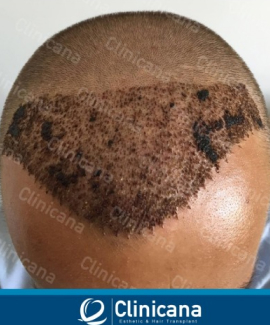
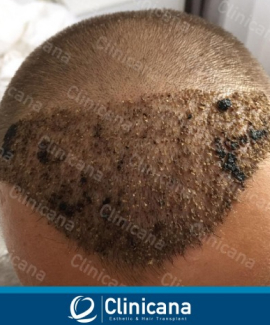
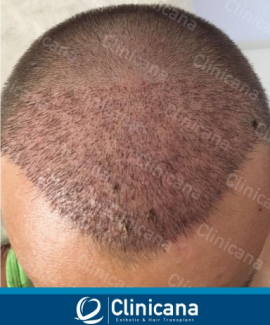
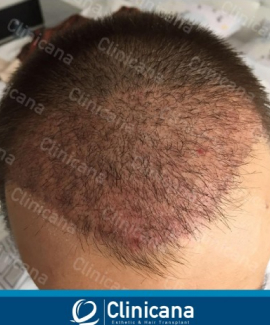
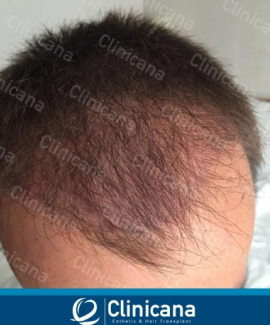
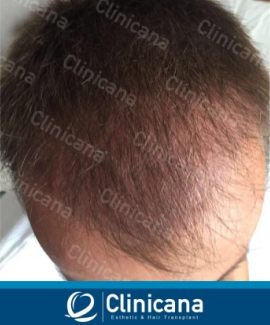
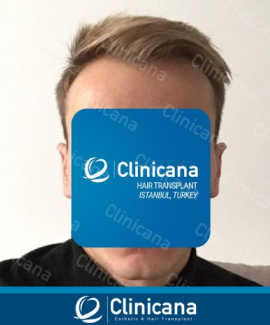
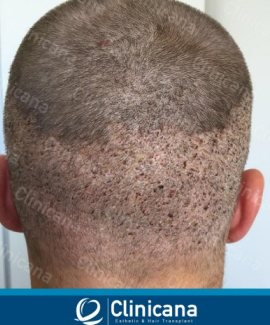
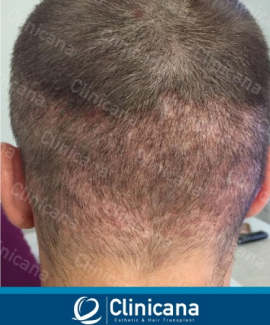
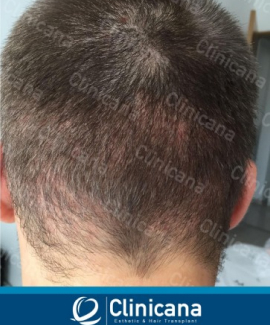
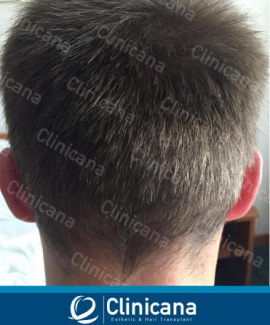
A Hair transplantation is considered to be a very safe procedure with minimal risks, provided that it is carried out professionally with the proper aftercare.
However, risks can never be ruled out completely to 100%.
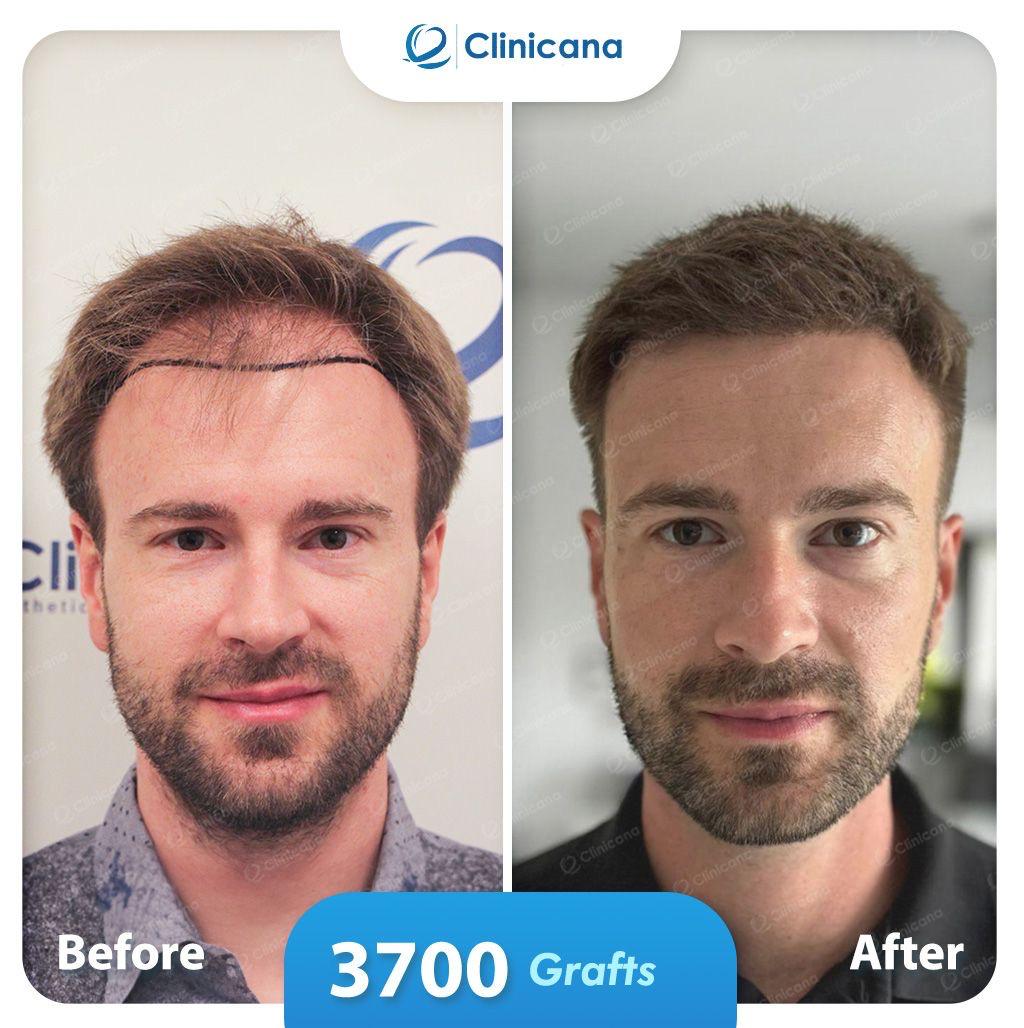
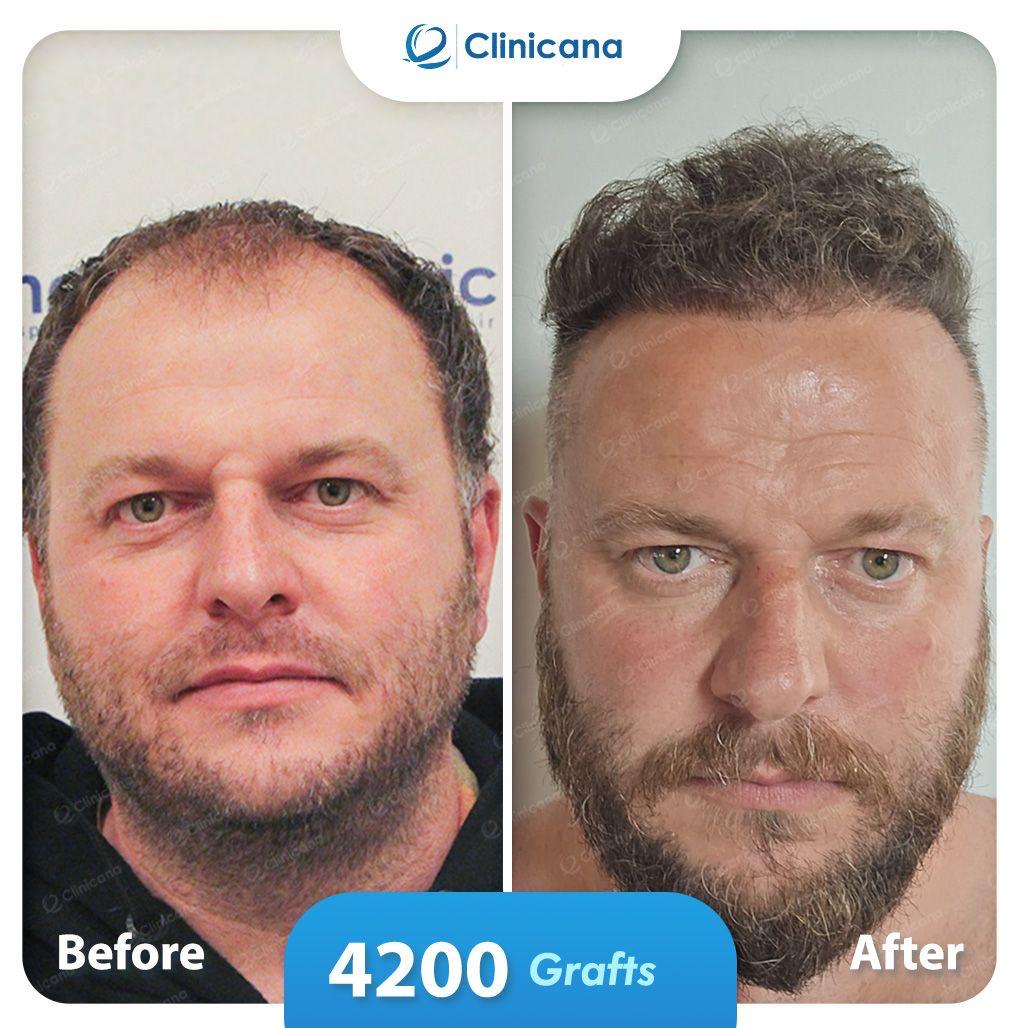
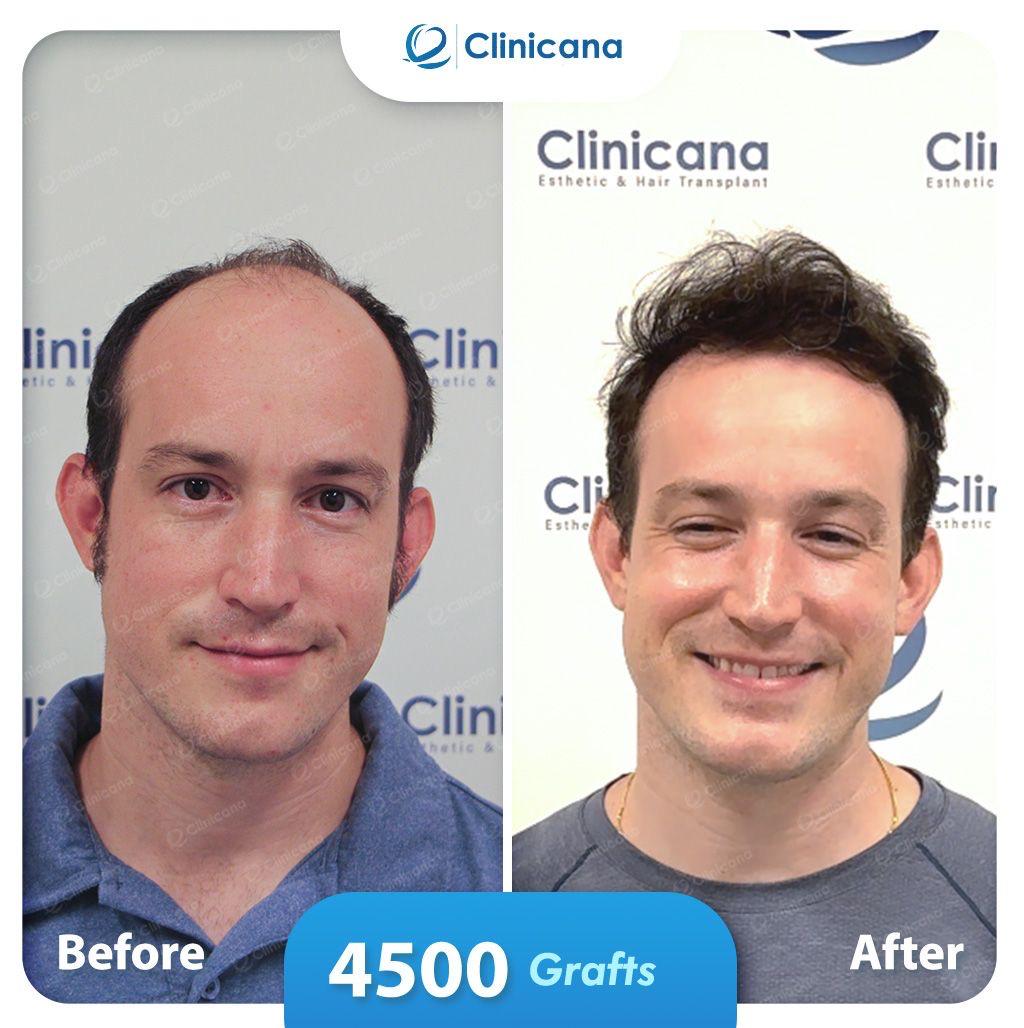
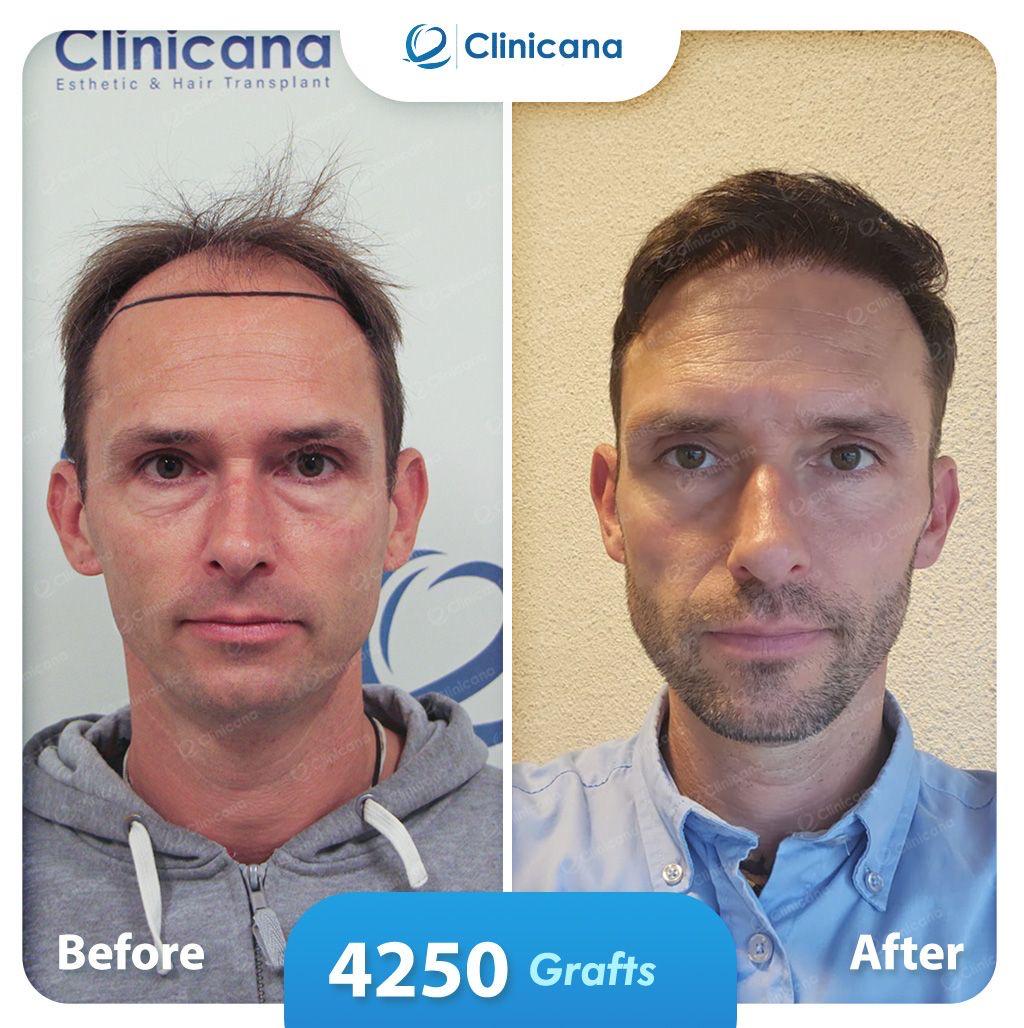
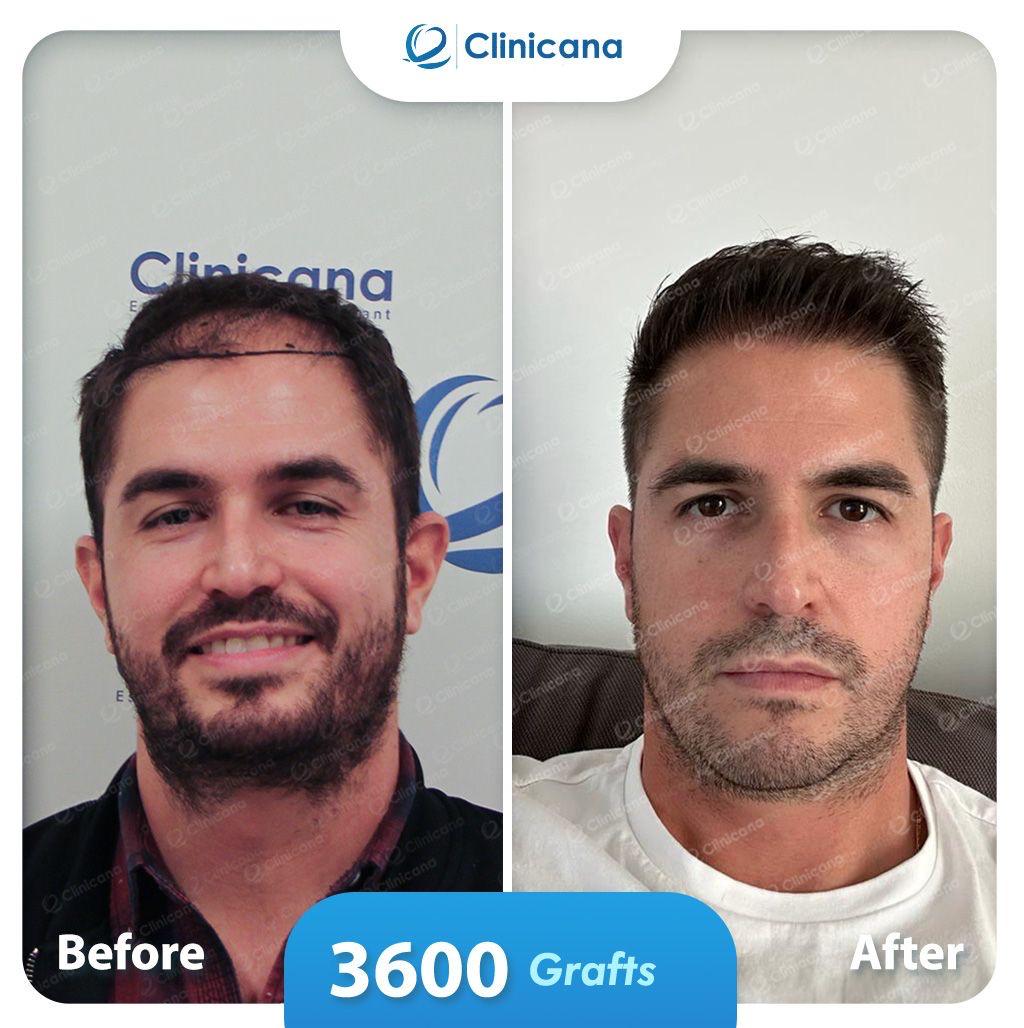
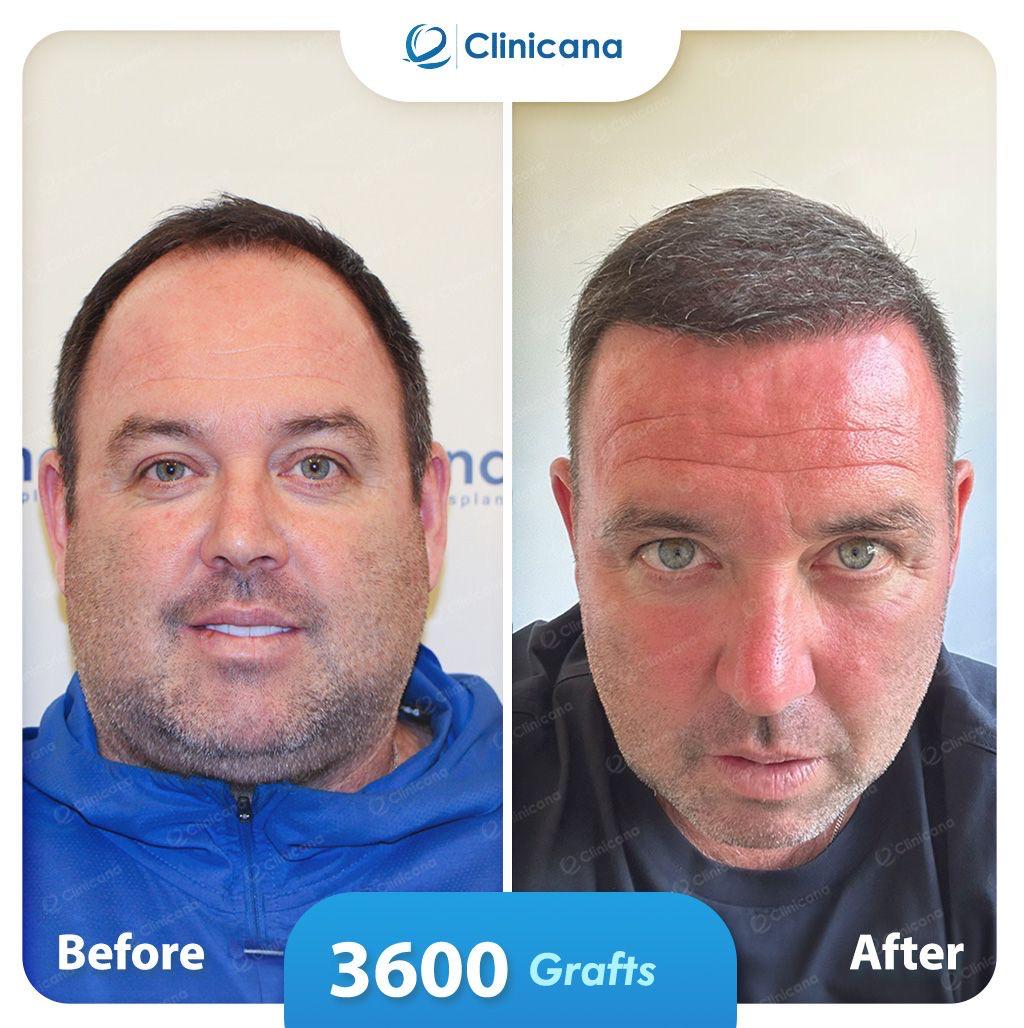
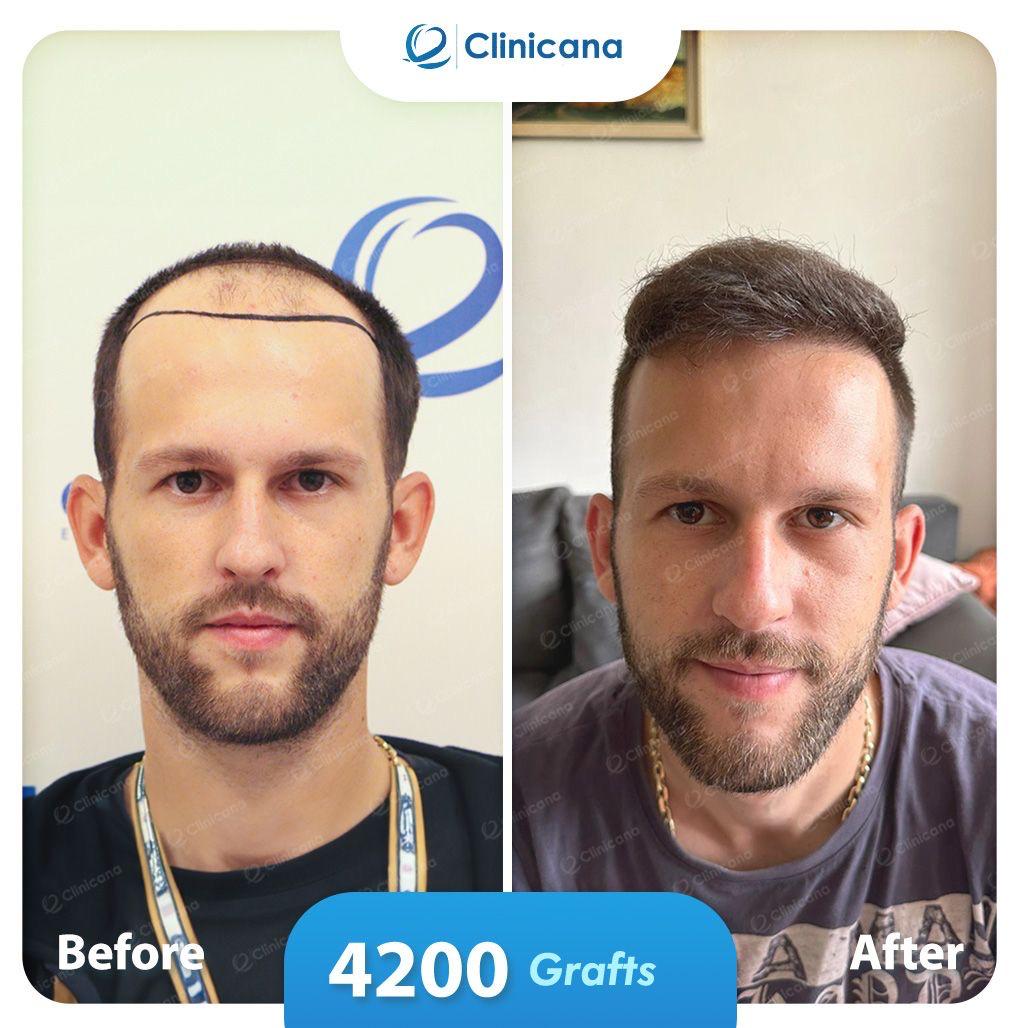

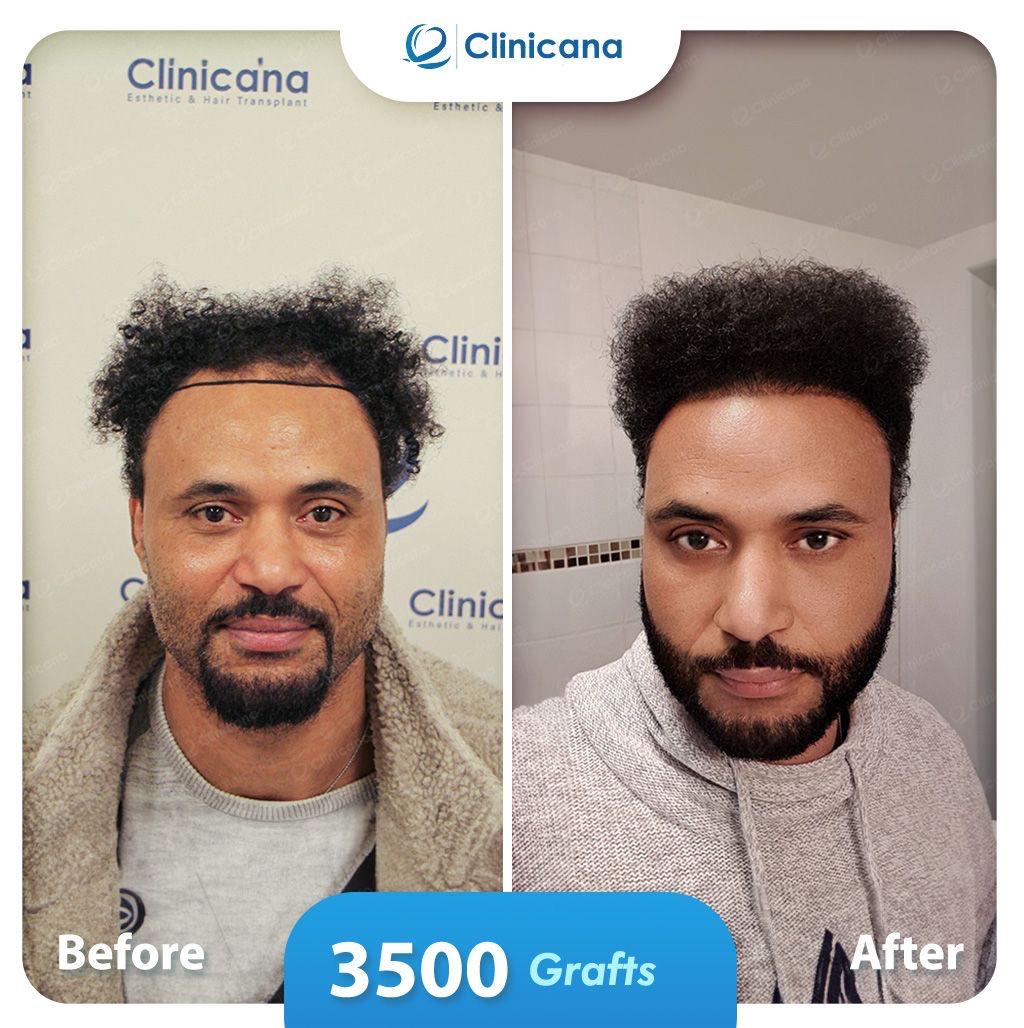

FUE (Follicular Unit Extraction) describes just the extraction method of the grafts from the donor area.
The implantation method of the extracted grafts is performed either by the Sapphire- or the DHI-Method.
Both methods are among the most modern and efficient techniques in the field of hair transplantation.
The main difference lies in the implantation of the extracted follicles:
With IST-HAAR, you benefit from experienced specialists who are experts in both methods.
Usually, the donor hair comes from the back of the head, since this hair is genetically programmed not to fall out. Other body hair is not (preferably) used, since it does not have the same structure and growth as the hair on the head, which makes it unsuitable for a natural result.
The only minor pain that you will feel during your hair transplantation is the local anesthesia, which you will receive at the beginning.
Everything after that will be completely painless.
After the hair transplant, you will receive proper medication (antibiotics, etc.) also painkillers, because some patients might experience a headache, on the next day.
This headache is usually minor and completely gone by the second day after the hair transplant.
Gel, styling spray, oils, hair care products, or any products that contain chemicals, should not be used for a period of six months after the procedure.
In General: In case you use any of the hair products from above, please make sure to wash your hair before you go to sleep.
The new hairline is agreed, with the medical team before the hair transplant procedure and is based on the location of the frontal muscles on your scalp (taking into consideration your age, the size of the bald area and the symmetry of your face), to receive a natural-looking result.
-Approximately 3 days before the treatment, you should avoid alcohol, drugs and blood-thinning medication (e.g., aspirin).
On the day of the hair transplant, you should wash your hair, have a good breakfast and not consume any caffeine!
For the first 10 days we will ask you to wash your hair every day in a specific way; the details will be provided to you from IST-HAAR. (The first hair wash will be done together.)
For the first two days, take it easy, do not bend over, do not touch your head and refrain from sexual intercourse.
Protect your scalp from sunlight and tanning beds for 1-1.5 months. For the first 14 days, you should also refrain from any physical exhausting activities and from heavy sweating.
In general, we can say that you will be able to carry out almost all daily activities 1-2 days after the hair transplant.
Nevertheless, we would kindly ask you to stay at the hotel and relax on the day of your hair transplant.
One day after the hair transplant, you can continue your daily routine, but carefully, since it takes two weeks until the root of the transplanted hair properly grows in.
The wound healing is usually completed after 10 days, so there is hardly any sign of the treatment.
Yes, a natural result is our top priority at IST-HAAR.
Our experienced specialists use the most efficient and modern techniques to ensure that your new hair is perfectly integrated into the existing hair pattern.
The result is so natural that it is almost indistinguishable from your real hair.
No, the transplanted hair comes from a genetically stable area (back of the head).
The donor area is not sensitive to testosterone receptors and therefore they will not fall out.
Your transplanted hair will last a lifetime.
Thanks to the modern FUE-method (Follicular Unit Extraction), there are no visible scars.
The hair follicles are harvested using a fine punch, resulting in a minimally invasive and scar-free healing process.
The former used the FUT-method (Follicular Unit Transplantation) would leave little visible scars, but the FUE-method doesn’t leave any visible scars.
The FUE-method is also described as the gold standard for hair transplants.
The new hair starts to grow, usually after 3-4 months.
After 6 months, approximately 70-80% of the final result will be visible.
The final result will be visible after 12 months.
Essentially yes. Every patient undergoes the same procedure.
The difference between the patients is just the implantation method (Sapphire or DHI).
There is a planned break, after approximately 3 hours, in which you will receive a little meal, and our experts can also relax for a bit. Other than that, there are no planned breaks.
Of course, you can always ask for a short break if it’s needed.
This depends on the performed method and the number of grafts, which will be transplanted.
The extraction of the grafts from your donor requires your donor area to be shaved to a certain degree.
The DHI-method only requires a minor part of the head (donor area) to be shaved), but it does not require a complete shaving of the head. This method is preferred especially by women, because they can easily cover the shaved donor area with their long hair.
The Sapphire-method (usually) requires the complete shaving, if it’s planned to transplant more than 2.000 grafts.
Kindly contact us, the expert of IST-HAAR will gladly assist you with further details.